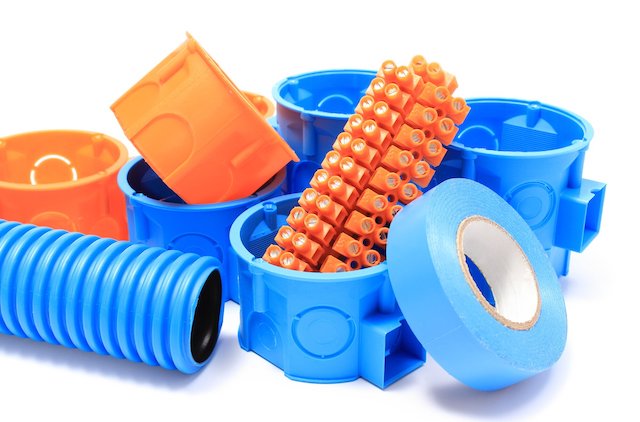
The global manufacturing industry is projected to be worth $117.7 billion by 2025. Because of this size, it’s important that you assemble end products using precise and uniform parts. After all, high-quality output is essential to staying ahead of the competition.
CNC machining is the ideal way to ensure a quality output so that plastic parts fit together seamlessly and effortlessly. Read on to learn some benefits of CNC machining to understand why it’s the most common plastic manufacturing process available today.
A computer-numerical control (CNC) machine makes manufacturing processes easy. A professional operator programs the machine to move exactly as they want it to. They choose the speed and location of movements as well as the feed rate and coordination of movements.
CNC machining is a reductive process, meaning that it starts with a larger block of material and removes excess parts of that material. So, if you’re trying to make custom plastic gears, the machine will take a drill or lathe to an unformed block of plastic. It will then cut a gear out of that plastic in the way that the programmer asks it to.
It’s 100% automated and produces a uniform output every time.
It’s important to note that operating a CNC machine requires extensive knowledge. The person creating the output will need a firm grasp of both the machine’s workings and the network program used to drive its automated movements.
Luckily, outsourcing production enlists professional help, so people with 70+ years of experience in making precision plastic products will do the hard work for you. Beyond placing the order, you won’t need to worry about involving yourself in the production process.
CNC machines are automated. Unlike manual operations, they don’t require a person to work with the plastic directly after the machine has been programmed. They can tirelessly cut through plastic 24/7 until your job is done.
This means that you’ll get faster output so you can begin prototyping and building more quickly.
The assembly process is also easy. Machines move human resources down an assembly line so that workers can manage higher production settings than they otherwise could. Because the parts produced by CNC machines are exceptionally uniform, assembling larger items from custom gears and screws is simple.
Time saved is also money saved, so labor costs will be lower. Additionally, because CNC machining uses fewer raw materials than other methods, there are lower material costs as well.
The main advantage of CNC machining is the precision of every plastic part that comes out of the production process. The machines are pre-programmed to produce the same output every time, and the automation makes them uniform.
High-quality lathes, precision centerless grinding methods, and milling machines that remove plastic from the stock unit also have very precise and sharp blades. This prevents abnormalities on any pieces of plastic. You won’t need to worry about odd surface textures or unwanted scratches and chips.
CNC processes are also specifically designed to produce small parts. In fact, Severna’s tools can machine parts ranging from 0.020″ to 1.250″ in diameter.
If you’re looking to make tiny gears with many evenly-spaced teeth, you can do so precisely and easily. If you want corkscrews in abnormal shapes that are nearly microscopic, this is possible.
This is also ideal because the output will have fewer errors. You won’t be left with faulty and unusable parts at future stages of the production process. You also won’t need to spend more money on producing imprecise parts again to correct preventable mistakes.
Our storage facility has a pre-existing extensive inventory of stock plastics for CNC machining. Not all of these plastics are the same.
Nylon, Teflon, Delrin, and PVC are some of the most common. However, there are over a dozen different options to choose from including acrylic, polycarbonate, and HDPE. Each of these materials has its own advantages, from cost-effectiveness to long-term durability.
This is why CNC machining has such a diverse range of applications. Whether you’re producing an auto part prototype or creating end-products for a consumer electronics store, there’s a CNC method that can help you create the precise parts you specifically require.
The CNC machine operator sets the number of parts that must be produced in one batch. This means that they can easily set the machine to produce a small order. It’s easy to produce a huge batch of plastic parts for functional product runs, but it’s just as simple to create a few gears for a prototype.
The ability to run small batches also means that you can get several different parts within one batch. They can just have minor tweaks from the previous part or can be completely different. There’s a lot of flexibility when the operator can just change the CNC program slightly and keep running the program for the next run.
CNC machining is also more environmentally friendly than other manufacturing alternatives. It cuts with utmost precision so there’s very little material waste. Any excess plastic can be recycled or used to create other, smaller parts later.
There’s also extremely low energy output when you use a CNC machine. The EPA says that CNC machining only uses about 1/7 of the energy that other methods require. This is because they don’t use as much electricity to run.
Now that you know why CNC machining is the most common plastic manufacturing process available, it’s time to get started. Severna’s experts are excited to help you take advantage of CNC machining benefits with outsourced manufacturing services.
We’re committed to providing you with quality parts at an affordable price, so request a quote to begin the process of having your precise plastic parts produced today.